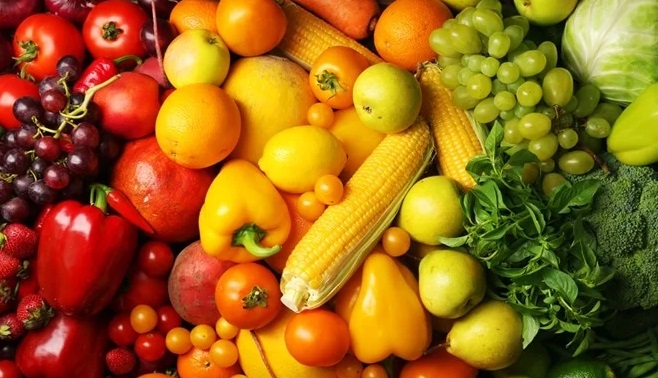When it comes to enhancing your dietary habits and fostering a healthier lifestyle, the unparalleled benefits of incorporating more vegetables into your meals cannot be overstated. Vegetables, being nutritional powerhouses, house a diverse range of essential nutrients crucial for optimal body function. Laden with vitamins, minerals, and fiber, regular consumption of vegetables plays a pivotal role in safeguarding the body against chronic ailments such as heart disease, diabetes, and specific cancer types.
Beyond their disease-fighting properties, vegetables also emerge as allies in effective weight management. Their low-calorie, high-fiber nature contributes to a sense of fullness, making them an ideal choice for those striving to maintain a healthy weight or shed a few pounds.
Yet, the advantages of integrating more vegetables into your diet extend far beyond the physical realm. Research indicates that a vegetable-rich diet can enhance digestive health, diminishing the risk of issues like constipation and bloating. Furthermore, for those seeking to uplift their mental well-being, the nutrients present in vegetables may wield the power to enhance brain function, potentially reducing the risk of depression and mood disorders.
If you find yourself unfamiliar with the art of incorporating abundant vegetables into your diet, fear not. With a dash of creativity and a collection of helpful tips, you can seamlessly infuse more veggies into your meals without compromising on taste or enjoyment. To guide you on this flavorful journey, here are 10 inventive ways to add more vegetables to your diet:
10 inventive ways to add more vegetables to your diet
- Commence Your Day with Veggies: Break away from the conventional carb-heavy breakfast by infusing vegetables into your morning routine. Consider adding sautéed spinach or kale to your scrambled eggs or whipping up a green smoothie featuring spinach, banana, and almond milk.
- Make Veggies the Main Attraction: Elevate the appeal of vegetables by making them the focal point of your meals. Instead of centering your attention on meat or grains, construct your meal around a medley of colorful vegetables. Roasting vegetables in olive oil, salt, and pepper until crispy and caramelized can be an exquisite option.
- Diversify Cooking Methods: Expand your culinary repertoire by experimenting with different cooking methods for your veggies. Grilling or roasting can impart a smoky, charred flavor, while sautéing them in olive oil and garlic offers a savory twist.
- Reinvent Your Salad Experience: Transform salads from mundane to delightful by playing with ingredients and flavors. Start with a green base, add roasted or raw veggies, incorporate a protein source like chicken or tofu, and finish with a flavorful dressing. Experiment with toppings like nuts, seeds, or dried fruit for added variety.
- Stealthily Incorporate Veggies: Sneak a few veggies into your favorite meals to boost their nutritional value. Whether finely grating zucchini or carrots into meatballs, adding pureed cauliflower to mashed potatoes, or tossing in roasted cherry tomatoes, mushrooms, or spinach into pasta dishes, these subtle additions can make a significant impact.
- Explore Exotic Vegetables: If you find yourself stuck in a vegetable rut, venture beyond the ordinary and explore exotic options. Visit local farmer’s markets or specialty stores for unique finds such as purple sweet potatoes, watermelon radishes, or heirloom tomatoes, injecting both variety and support for local farmers into your diet.
- Craft Your Veggie Chips: Satiate your craving for something crunchy and salty with homemade veggie chips as a nutritious alternative to traditional potato chips. Thinly slice sweet potatoes, beets, or kale, toss them with olive oil and salt, then bake until crispy. These veggie chips offer not only delightful flavors but also a healthier snack option.
- Substitute Carbs with Veggies: Incorporate veggies as substitutes for traditional carb-heavy foods like pasta, rice, and bread. Utilize a spiralizer or julienne peeler to create zucchini noodles or “zoodles” in place of spaghetti. Cauliflower rice, achieved by pulsing cauliflower in a food processor, serves as an excellent substitute in stir-fries or as a bowl base.
- Craft Veggie-Based Dips and Spreads: Elevate your dip and spread game by utilizing veggies as the foundation instead of conventional ingredients like chickpeas or avocados. Delight in roasted beet hummus, cauliflower “hummus,” or spinach and artichoke dip made with pureed white beans. Additionally, experiment with bases like roasted red peppers, eggplant, or carrots for diverse and nutritious dip options.
- Experiment with Spices and Seasonings: Enhance the flavor profile of your veggies by incorporating a variety of spices and seasonings. From cumin and chili powder to garlic and rosemary or turmeric and ginger, experimentation with different combinations can elevate the taste. A splash of vinegar or citrus juice can also provide a refreshing twist to your veggie dishes.
Conclusion
With these 10 creative and practical strategies, incorporating more vegetables into your diet becomes an enjoyable exploration rather than a daunting task. Beyond the inherent health benefits, you will discover a world of diverse flavors and culinary possibilities. It’s crucial to remember that taste preferences vary, so feel free to experiment and tailor these suggestions to your liking.
Whether you are an avid vegetable enthusiast or someone in need of a little persuasion, the array of delicious ways to infuse vegetables into your diet is bound to cater to every palate. By embracing the flavors and nutrients offered by vegetables, you not only improve your health but also embark on a gastronomic adventure filled with exciting and vibrant culinary experiences. So, roll up your sleeves, get into the kitchen, and savor all the incredible benefits that vegetables can bring to your diet!

